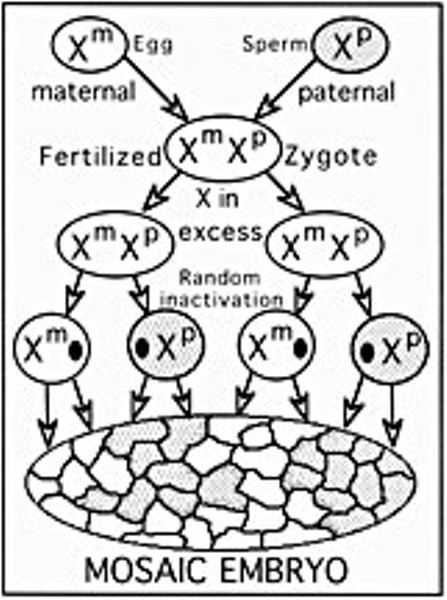Human females possess two X chromosomes, whereas males have one X and one small Y chromosome. This is in addition to 22 pairs of autosomal chromosomes unrelated to sex. Males prove that just one X is sufficient, so how do females cope with an excess of X chromosomes? They do so by inactivating one of their X chromosomes, compacting it into a clump named a Barr body. In the past, female Olympic athletes have been required to reveal their Barr bodies for gender verification. The Barr exam was abandoned because it could be confused by XXY males and X females.
Silencing of the extra X in females occurs randomly during early embryo genesis. Some cells will repress the maternally derived X while other cells repress the paternal X, and these choices are then transmitted into succeeding generations of cells. The resulting embryo is a mosaic of X-linked genes, often expressing different gene alleles in different regions (see diagram). We are ready to understand why colorful calico cats are almost always female.
Sex determination in all mammals parallels that in humans. In the common female calico cat, genes for ginger and dark fur occur within different X chromosomes. Thus, the calico's colors flaunt the maternal-paternal mosaicism which is usually invisible in humans. The white areas in a calico are produced by an overiding, melanin-suppressing gene located on an autosomal chromosome. One in 3,000 calico cats is male. These rare tomcats are either XXY males or chimeras, fusions of 2 different embryos.
A question for you: Would you like human hair color to be sex-linked, as it is in calico cats?



Comments